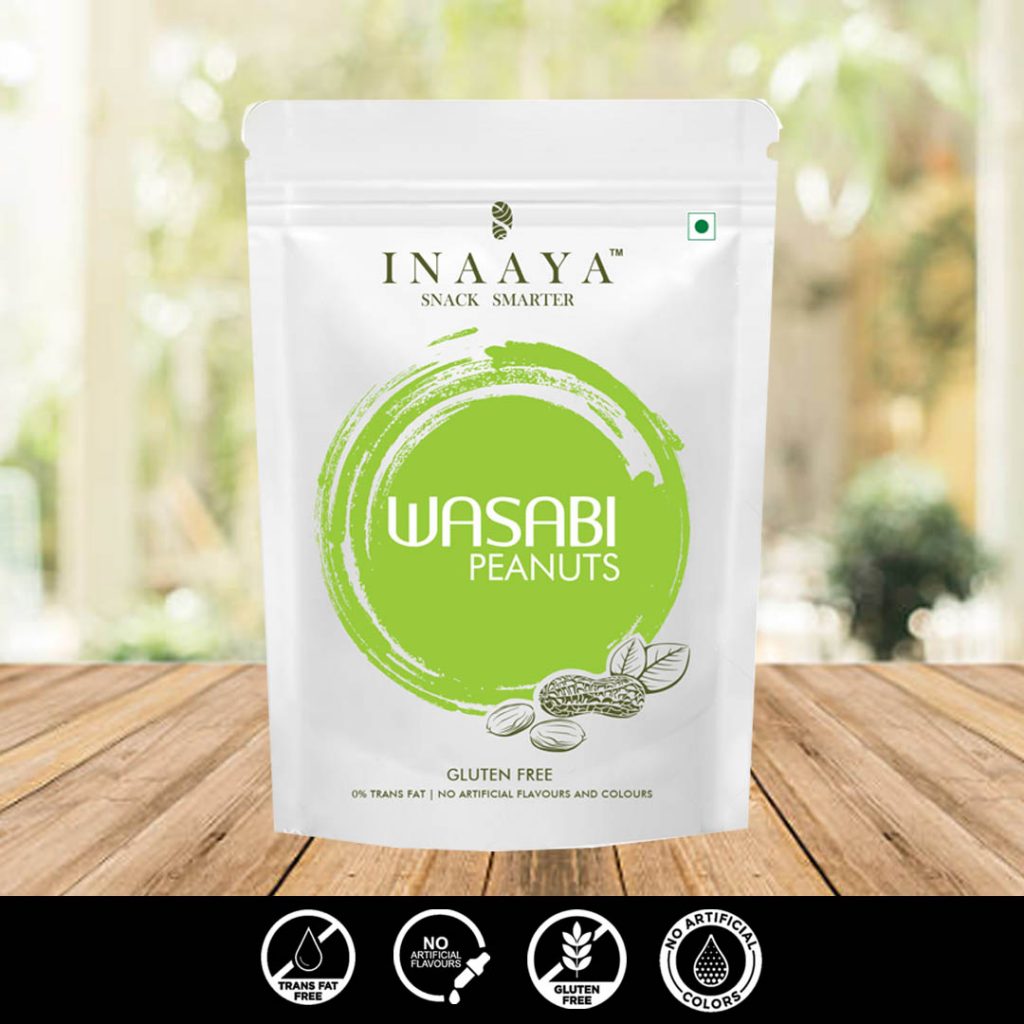No Artificial Colors
 At Inaaya: Snack Smarter, the decision to stay away from the use of artificial colours was easy. The health & well-being of consumers supersedes the desire to maximise profits. Some of our products (wasabi peanuts, sriracha peanuts and beetroot chips) have gained a loyal following even though their appearance is not as enticing as some other imported brands available in the Indian market.
At Inaaya: Snack Smarter, the decision to stay away from the use of artificial colours was easy. The health & well-being of consumers supersedes the desire to maximise profits. Some of our products (wasabi peanuts, sriracha peanuts and beetroot chips) have gained a loyal following even though their appearance is not as enticing as some other imported brands available in the Indian market.
Why are food colours added?
Products (food and non-food) that look dull or are off looking are perceived to be inferior.
In the food industry, food colours can protect the integrity of the product (nutrients and flavours) by providing a barrier and shielding it from the impact of sunlight and the environment. Food colours are used as a decorative tool and help influence the perceived flavour of the product.
 Artificial Colour
Artificial Colour
Artificial colours are a combination of seven artificial dyes that have been approved by food authorities. These colours include Blue 1, Green 3, Blue 2, Red 3, Red 40, Yellow 6 and Yellow 6. Food dyes are chemical substances that were developed to enhance the appearance of food by giving it artificial colour. People have added colourings to food for centuries. The first artificial food colourings were created in 1856 from coal tar. In recent times, food dyes are made from petroleum.
The three most widely used artificial flavours used by the food industry (Yellow 5, Yellow 6 and Red 40), contain compounds, including benzidine and 4-aminobiphenyl, that research has linked with cancer. Children consuming products containing artificial flavours have a heightened risk of allergies, hyperactivity, learning impairment, irritability and aggressiveness. Due to these side effects, the dosage of food dyes is strictly regulated. The level of dosage varies across geographies.
Some pet food manufacturers use food dyes in the manufacture of certain products. The harmful side effects of food dyes and artificial flavours extend to pets too. In the food industry, the sweet and confectionary, beverages, sauces & chutney manufacturers are most likely to use artificial colours in their products. In some geographies (China, Thailand, other South East Asian nations, North America) the dosage permitted is slightly higher than what would be permitted by Indian food safety authorities. Several mainstream American snack brands use artificial colours in their products.
 Other than the food industry, the pharmaceutical, cosmetics and chemical industries use artificial colours in their products. Consumer awareness about the dreadful effects of artificial colours is increasing with time. This has caused manufacturers to veer away from the use of synthetic colours (artificial colours) whenever they can. The market for products (food and non-food) that refrain from using artificial colours is growing but not fast enough. Artificial colours are much cheaper, more stable and provide a greater uniformity in colour than natural colours.
Other than the food industry, the pharmaceutical, cosmetics and chemical industries use artificial colours in their products. Consumer awareness about the dreadful effects of artificial colours is increasing with time. This has caused manufacturers to veer away from the use of synthetic colours (artificial colours) whenever they can. The market for products (food and non-food) that refrain from using artificial colours is growing but not fast enough. Artificial colours are much cheaper, more stable and provide a greater uniformity in colour than natural colours.
Natural Colours
Natural colours originate from a wide range of sources like vegetables, fruits, plants, minerals and other edible natural sources. Grass, beetroot and turmeric are used widely as natural colours in the food industry. Food colouring is used both in commercial food production and in domestic cooking. Natural colours impart colour when added to food or drink. The cosmetic industry is making strides in the usage of natural colours in their products. The pharmaceutical industry uses natural colours in a big way. The colours used by them are white, blue, red, yellow, green and brown.
